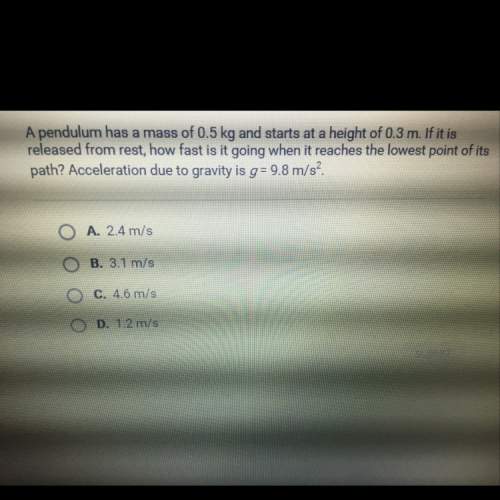

Answers: 1


Other questions on the subject: Physics

Physics, 21.06.2019 20:00, mystaxkkks
You notice a very one-dimensional-thinking snail crawling along one rail of a railroad track. naturally, you remove it to a safer place. but before you do, you observe it as it moves from position xi = -92.9 cm to position xf = -64.9 cm along the rail, as measured from a point where one rail abuts the next. what is the snail\'s displacement δx in centimeters?
Answers: 1

Physics, 22.06.2019 06:20, jonmorton159
Clothing made of several thin layers of fabric with trapped air in between, often called ski clothing, is commonly used in cold climates because it is light, fashionable, and a very effective thermal insulator. so it is no surprise that such clothing has largely replaced thickand heavy old-fashioned coats. (a) consider a jacket made of five layers of 0.1-mm-thick synthetic fabric (k = 0.13 w/m·°c) with 1.5-mm-thick air space (k = 0.026 w/m·°c) between the layers. assuming the inner surface temperature of the jacket to be 28°c and the surface area to be 1.25 m2, determine the rate of heat loss through the jacket when the temperature of the outdoors is 0°c and the heat transfer coefficient at the outer surface is 25 w/m2·°c. (b) what would your response be if the jacket is made of a single layer of 0.5-mm-thick synthetic fabric? what should be the thickness of a wool fabric (k = 0.035 w/m·°c) if the person is to achieve the same level of thermal comfort wearing a thick wool coat instead of a five-layer ski jacket?
Answers: 1

Physics, 22.06.2019 07:20, coolusername1314
The softest and hardest minerals are: softest hardest
Answers: 1

Physics, 22.06.2019 22:20, hailey5129
The starship enterprise is caught in a time warp and spock is forced to use the primitive techniques of the 20th century to determine the specific heat capacity of an unknown mineral. the 125-g sample was heated to 96.3°c and placed into a calorimeter containing 85.9 g of water at 20.0°c. the heat capacity of the calorimeter was 14.2 j/k. the final temperature in the calorimeter was 24.5°c. what is the specific heat capacity (in j/g°c) of the mineral? enter to 4 decimal places.
Answers: 1
You know the right answer?
Engineers at a technology company are designing a new battery for the next generation of cell phones...
Questions in other subjects:



History, 28.01.2020 02:31

Mathematics, 28.01.2020 02:31


Mathematics, 28.01.2020 02:31

History, 28.01.2020 02:31

Mathematics, 28.01.2020 02:31

Mathematics, 28.01.2020 02:31

History, 28.01.2020 02:31




